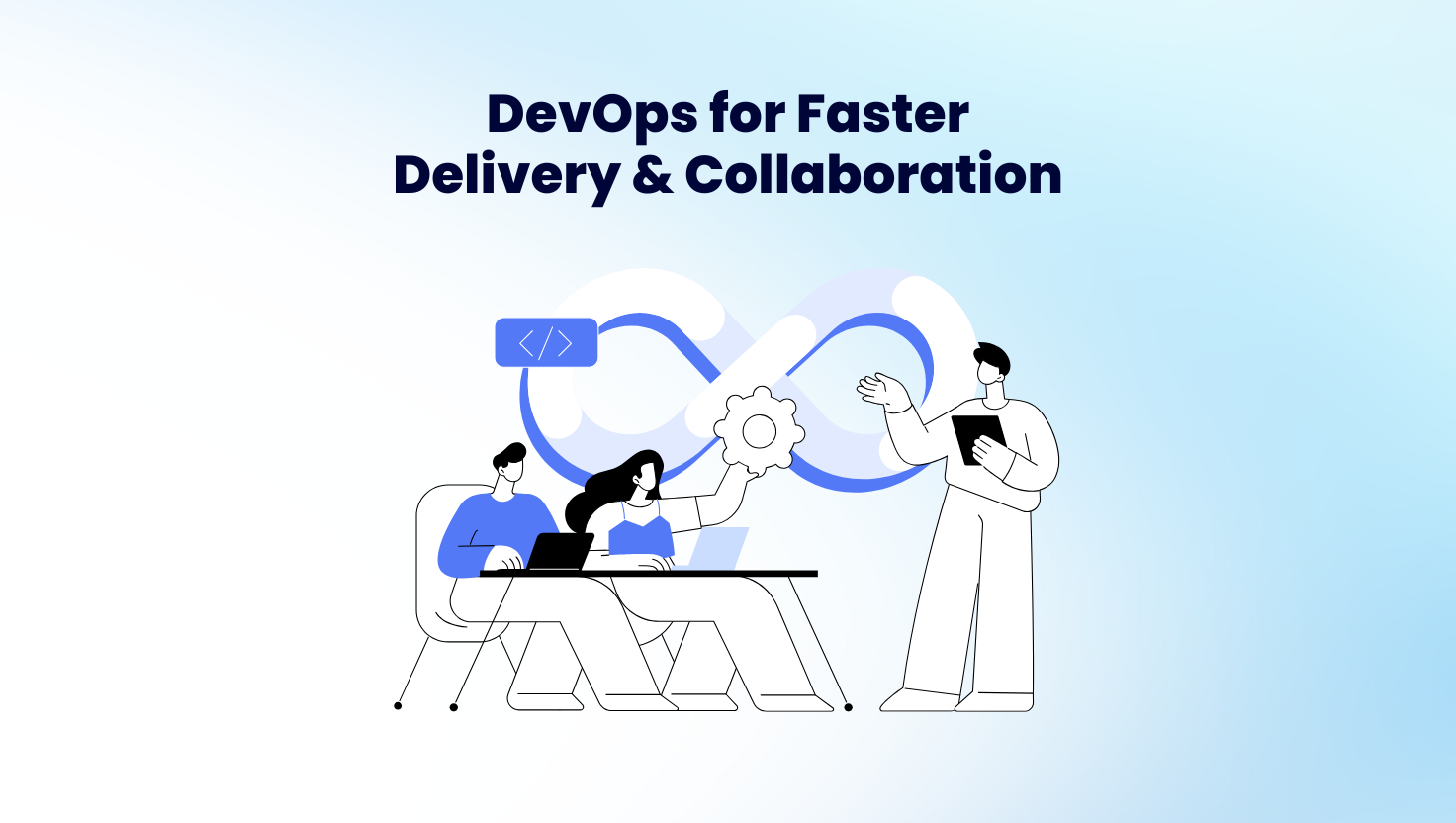
17 Mar How DevOps Accelerates Software Delivery and Enhances Collaboration
DevOps has transformed the way organizations develop, deploy, and maintain software. By integrating development and operations teams, DevOps fosters automation, improves collaboration, and speeds up software delivery. Companies that implement DevOps effectively can reduce time to market, enhance product quality, and create a more reliable software development lifecycle.
This article explores how DevOps accelerates software delivery, improves team collaboration, enhances security, and helps organizations scale their IT infrastructure efficiently.
Understanding DevOps
DevOps is a set of practices, principles, and tools that aim to streamline software development and IT operations. The traditional software development process often suffers from silos between developers and operations teams, leading to slow deployment times, frequent miscommunication, and system failures.
DevOps bridges the gap between these teams by promoting continuous integration, automation, and collaboration. Organizations that embrace DevOps benefit from faster development cycles, increased deployment frequency, and improved system reliability.
Key characteristics of DevOps include:
- Collaboration: Developers and IT operations work together throughout the software lifecycle.
- Automation: Continuous integration, testing, and deployment processes reduce manual intervention.
- Monitoring and Feedback: Real-time tracking of system performance ensures quick issue resolution.
- Security Integration: DevSecOps ensures security is embedded in every phase of development.
How DevOps Accelerates Software Delivery
1. Continuous Integration and Continuous Deployment (CI/CD)
A core component of DevOps, CI/CD automates the process of integrating and deploying software updates.
- Continuous Integration (CI): Developers frequently merge their code changes into a shared repository. Automated testing is triggered to detect and resolve issues early.
- Continuous Deployment (CD): Once a change is approved, it is automatically deployed to production, eliminating delays caused by manual intervention.
Benefits of CI/CD:
- Faster and more reliable software releases.
- Early detection of bugs, reducing costly fixes later.
- Increased agility to adapt to market demands.
2. Infrastructure as Code (IaC)
Traditional infrastructure management involves manual provisioning and configuration, which is time-consuming and error-prone. Infrastructure as Code (IaC) automates this process by defining infrastructure configurations in code, making it easier to:
- Deploy and scale infrastructure rapidly.
- Ensure consistency across multiple environments.
- Reduce human error and configuration drift.
Popular IaC tools include Terraform, AWS CloudFormation, and Ansible.
3. Automated Testing and Quality Assurance
DevOps integrates automated testing into the development pipeline, ensuring that software releases are stable, secure, and high-quality. Automated testing includes:
- Unit testing: Ensures individual components work as expected.
- Integration testing: Verifies the interaction between different modules.
- Performance testing: Assesses system speed and scalability under load.
- Security testing: Detects vulnerabilities before deployment.
By incorporating automated testing, companies can minimize bugs, reduce manual testing efforts, and accelerate development cycles.
4. Containerization and Microservices
Containers, such as Docker and Kubernetes, allow applications to run consistently across different environments. Microservices architecture further enhances scalability by breaking applications into small, independently deployable services.
Benefits of containerization and microservices include:
- Faster deployment and scaling.
- Increased flexibility for updating individual components.
- Improved fault isolation, ensuring that system failures do not impact the entire application.
How DevOps Enhances Team Collaboration
1. Eliminating Silos Between Teams
DevOps encourages cross-functional collaboration, ensuring that developers, IT operations, and quality assurance teams work together. This reduces misunderstandings, accelerates problem resolution, and improves overall productivity.
2. Real-Time Monitoring and Feedback Loops
Modern DevOps practices integrate continuous monitoring with tools like Prometheus, Grafana, and ELK Stack to track system performance and detect issues in real time.
Advantages of real-time monitoring include:
- Quick identification and resolution of system failures.
- Reduced downtime and improved system availability.
- Data-driven insights for performance optimization.
3. DevSecOps: Integrating Security into DevOps
Security is often an afterthought in traditional development. DevSecOps ensures that security is embedded into every stage of development through:
- Automated security scans within CI/CD pipelines.
- Compliance checks to meet regulatory standards.
- Early vulnerability detection, reducing security risks before deployment.
By prioritizing security from the beginning, DevOps reduces the risk of cyber threats while maintaining fast deployment cycles.
Challenges of Implementing DevOps
Despite its many benefits, organizations may face challenges when adopting DevOps:
1. Cultural Resistance to Change
Shifting from traditional development to DevOps requires a cultural shift, where teams must embrace collaboration, automation, and shared responsibility.
Solution:
- Provide DevOps training and workshops.
- Encourage leadership buy-in to drive organizational change.
2. Managing Complex Toolchains
DevOps relies on various tools for CI/CD, containerization, monitoring, and security. Managing multiple tools can be overwhelming.
Solution:
- Use DevOps platforms like Jenkins, GitLab CI/CD, or AWS DevOps for streamlined management.
- Adopt an integrated toolchain that automates workflows.
3. Security and Compliance Risks
Automating software delivery increases the risk of security vulnerabilities.
Solution:
- Implement DevSecOps to integrate security checks at every stage of development.
- Conduct regular security audits and vulnerability assessments.
Best Practices for a Successful DevOps Implementation
To maximize the benefits of DevOps, organizations should adopt the following best practices:
- Encourage collaboration: Foster a DevOps culture where developers, operations, and security teams work together.
- Automate processes: Implement CI/CD pipelines, automated testing, and infrastructure automation.
- Monitor system health: Use real-time monitoring tools to track application performance and detect failures.
- Choose the right tools: Leverage industry-leading DevOps tools for seamless integration.
- Prioritize security: Embed security practices throughout the development lifecycle.
How PT. KDN Can Help with DevOps Implementation
At PT. KDN, we specialize in helping businesses implement DevOps strategies that accelerate software delivery, improve collaboration, and enhance security. Our services include:
- DevOps Consulting: Evaluating your current development workflow and implementing best practices.
- CI/CD Pipeline Setup: Automating software builds, testing, and deployments.
- Cloud & Infrastructure Automation: Managing cloud environments with IaC solutions.
- Security Integration (DevSecOps): Embedding security into every phase of development.
- 24/7 Monitoring & Support: Providing real-time monitoring and issue resolution.
By partnering with PT. KDN, businesses can achieve faster deployments, reduced operational risks, and seamless collaboration between teams.


Sorry, the comment form is closed at this time.